Last time I covered Jacques Cousteau's first underwater habitat project of the three, in total, he was able to secure funding for. Diogenes was austere to say the least, tiny, cramped and rudimentary. By comparison, Conshelf 2 was a quantum leap forward in every way.
Conshelf 2 consisted of not one, but three habitats positioned close to each other at Shaab Rumi, in the Red Sea of Israel. It was established in 1963 and remains one of the most grand and ambitious undersea living projects ever undertaken.
Costing 1.2 million dollars in 1963 money, the only way Cousteau could afford it was to sign a film contract. Thus, "World Without Sun" was filmed, a documentary about the establishment and occupation of the Conshelf 2 "underwater village".
Starfish House, the main lodge, supported six men at a depth of 33 feet for one month. Deep Cabin, positioned at a depth of 90 feet, housed two men for a one week visit. The purpose of Deep Cabin was mostly to test out mixed breathing gases which were a new development at the time.
The aquanauts had every amenity of a house on land. Hot showers, television, radio, even a tanning bed for ensuring they got the vitamin D needed to stave off depression. This later led to the use of full spectrum lighting aboard submarines. They even had a resident chef, which assuredly did much to improve morale.
The crew included Albert Falco, who if you'll recall also participated in Conshelf 1. Jacques' wife paid a visit to the habitat, as did a parrot that was used as the proverbial "canary in the coal mine" to detect potentially unsafe buildup of CO2. Below you can see cut-away diagrams of Starfish House, Deep Cabin, and the submersible hangar as well as the "Diving Saucer" submersible that it housed:
As you can see, where Hydrolab received a submersible via docking collar, Conshelf 2 instead had a dedicated structure with an open moon pool in the floor which the Diving Saucer could surface through. This provided a dry space into which the submersible could be fully raised, such that its oxygen and batteries could be refilled, and repairs could be effected if necessary.
Conshelf 2 was not a single habitat project then, but really multiple at once. Which as you might expect made it a logistical nightmare. Many things went wrong, mostly to do with helium from the heliox breathing mixture seeping out through the spots where cables passed through the hull. This caused Deep Cabin to flood a little bit, over and over, until the cause was discovered.
A lot of valuable science got done as well though, mostly to do with the effects of protracted underwater living on human biology. It was discovered that higher concentrations of oxygen in the air caused hair and fingernails to grow three times faster, and sleep became especially restful and regenerative. These findings led to the medical use of hyperbaric chambers in hospitals to accelerate healing.
Conshelf 2 had many "firsts". It proved the value of putting humans in the ocean for long term scientific observation. It demonstrated the utility of providing someplace already underwater from which to deploy and recover a deep diving submersible, avoiding the perils that come with doing so from an A-frame ship (especially in choppy surface conditions).
Perhaps the best way to communicate what a marvel Conshelf 2 was at the time (and today) is to simply direct your attention to Le Monde Sans Soleil, or "World Without Sun", the documentary Cousteau produced about the Conshelf 2 project:
Today, sadly, all that remains of Conshelf 2 is the grown-over husk of the sub hangar. The rest, as is all too common, was hauled up out of the sea and sold for scrap. The hangar is accessible to scuba divers, but the windows have been smashed so as to flood it, lest anybody try to live inside it.
That's all for this time. Keep your eyes peeled for subsequent installments in this series!
Stay Cozy!
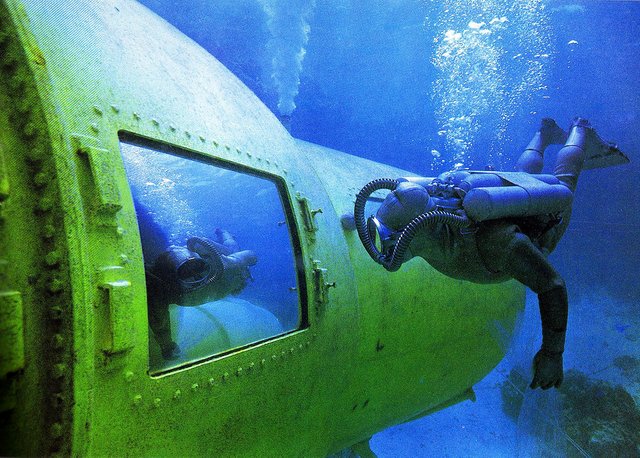
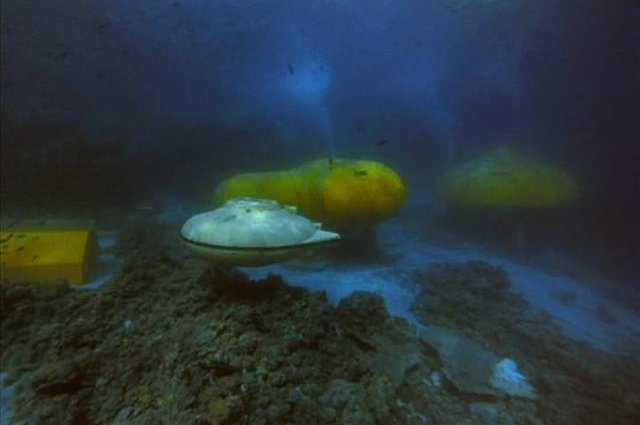
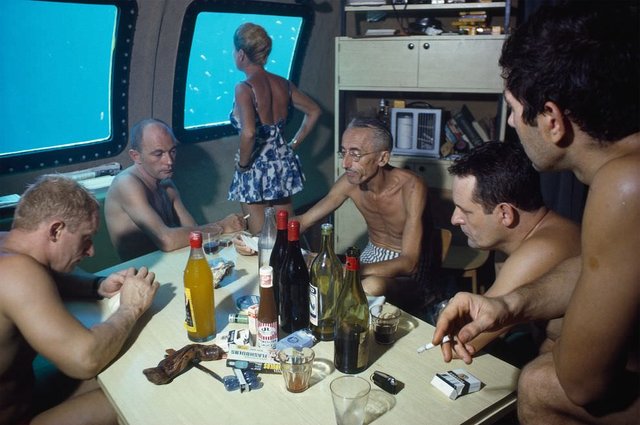
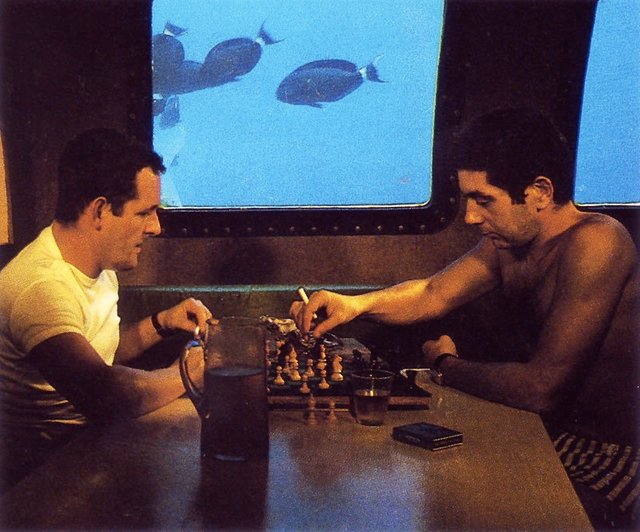
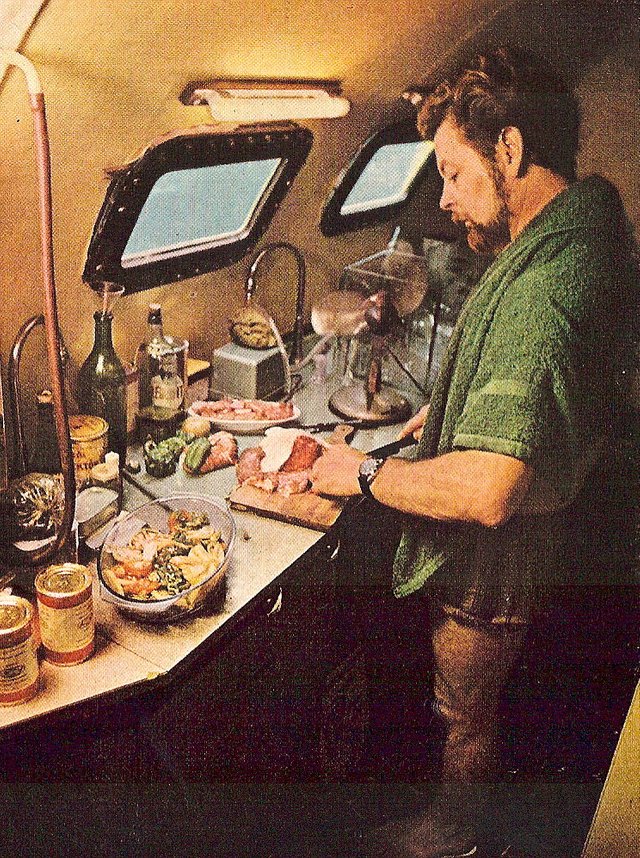
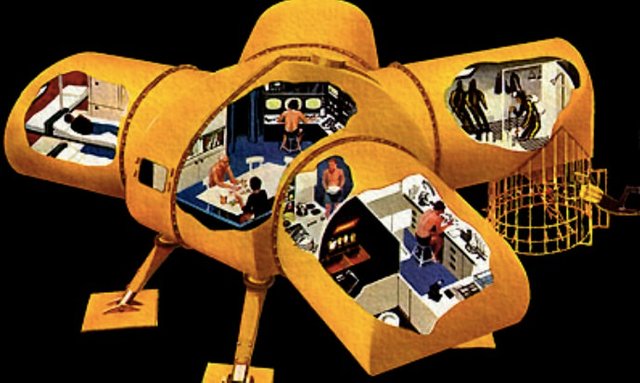
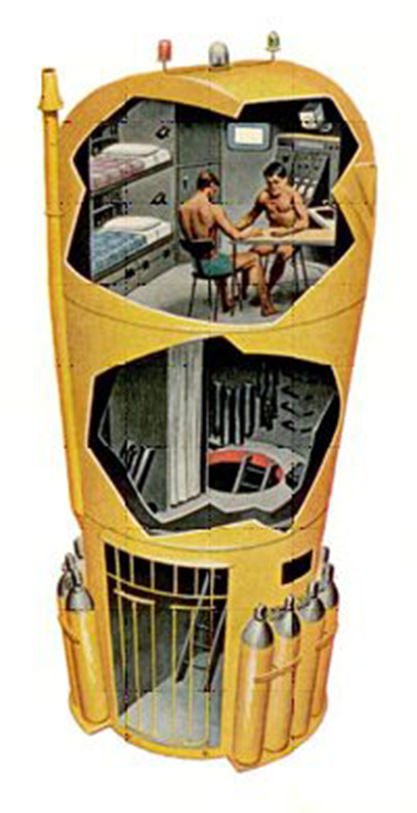
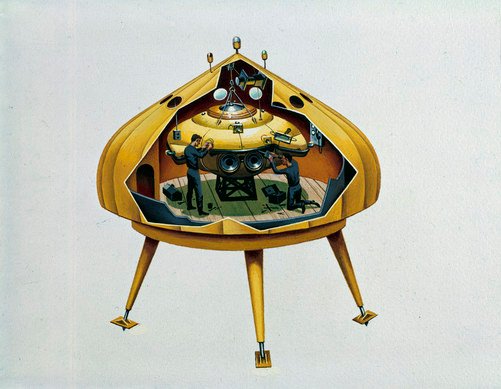
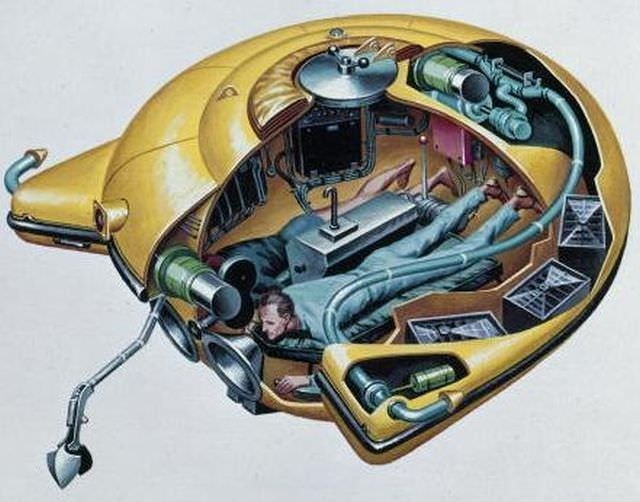
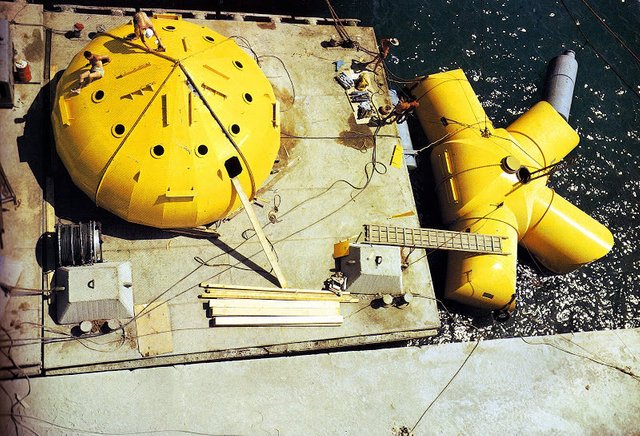
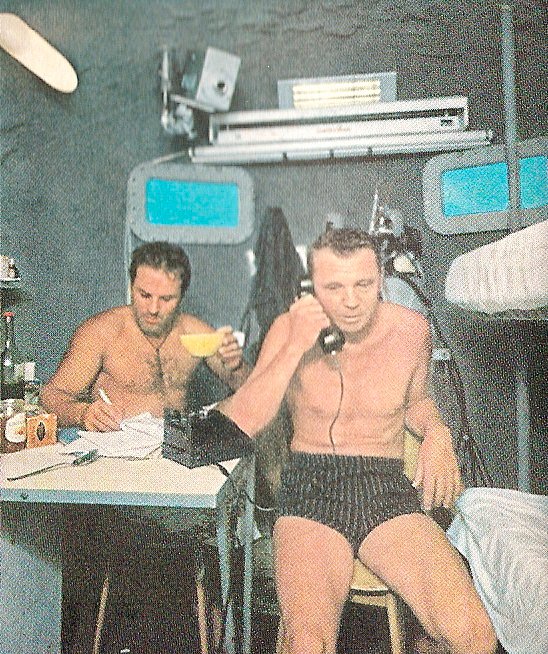
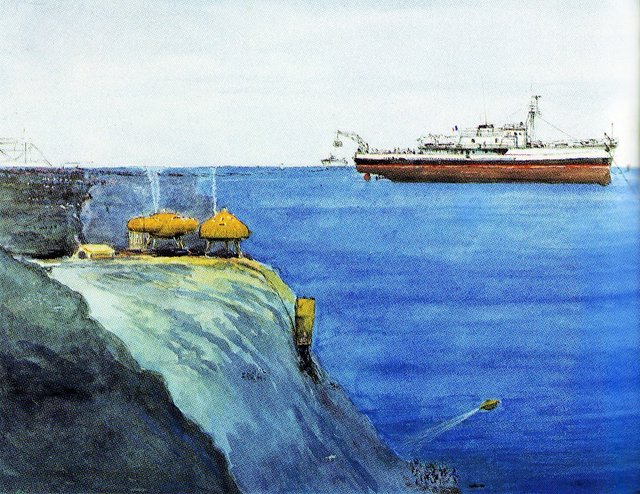
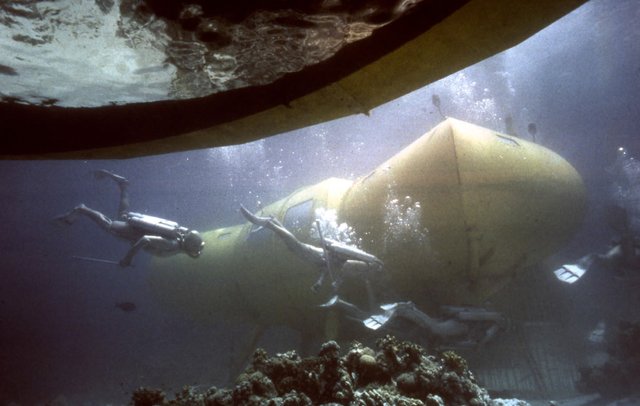
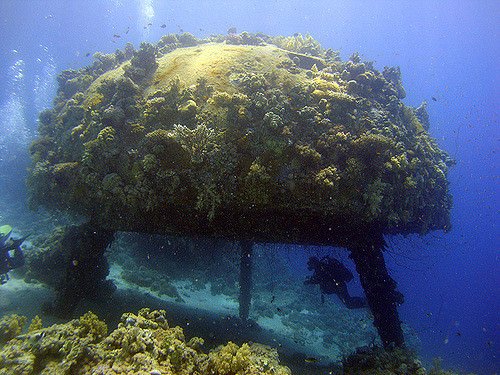
That’s the life lol away from the world and it’s bullshit
Downvoting a post can decrease pending rewards and make it less visible. Common reasons:
Submit
I would tottaly move in. Im also a diver. Would love to be There. Good post
Downvoting a post can decrease pending rewards and make it less visible. Common reasons:
Submit
In some point this is great idea but not all the time ;)
However nice to get away from the hassle and be with the nature under water ;)
Downvoting a post can decrease pending rewards and make it less visible. Common reasons:
Submit
Refreshing content, some I have followed and heard about. What I marvel at, is how often people remind everyone about how much scientific knowledge was gained from going to the moon.
Not much is mentioned about those venturing into the sea, the valuable lessons learned right here on earth, at great expense to both man and obtaining machines.
Downvoting a post can decrease pending rewards and make it less visible. Common reasons:
Submit
That is so cool. For some reason it reminds me of Sealab.
Downvoting a post can decrease pending rewards and make it less visible. Common reasons:
Submit
Hello alexbeyman,
I didn't know this, in fact most of what you've shared is all new knowledge for me! Really enjoyed reading, looking forward to more. :)
Downvoting a post can decrease pending rewards and make it less visible. Common reasons:
Submit
Well that certainly ended on a downer.
I wonder if there are any hospitals that regulate a higher oxygen atmosphere inside.
Downvoting a post can decrease pending rewards and make it less visible. Common reasons:
Submit
I really curious aboit the life under water, I will find that movie "world without sun" documentary. I did resteem this post for other to know. thanks for this.. It is not a waste of time reaading it.
Downvoting a post can decrease pending rewards and make it less visible. Common reasons:
Submit
I can't even imagine waking up after a good nights sleep and remembering that you're under water
Downvoting a post can decrease pending rewards and make it less visible. Common reasons:
Submit
I wonder if technologies help in anyway with traveling to space?
Downvoting a post can decrease pending rewards and make it less visible. Common reasons:
Submit
Indeed! I wrote a long, detailed paper about this for the Mars Society during my stay at MDRS 116. It would be an entire article's worth of information and effort to recount it here, but there are a lot of physical parallels and areas of technological overlap.
Downvoting a post can decrease pending rewards and make it less visible. Common reasons:
Submit
Alex - Living in space & living in underwater, both looks same isn't it? dark, miserable, hard feelings we can get there.... But glad to say if they could do such thing in 1963, they can do better in 2017-2018....
To get more audience, I wish to ReSteem your post.
+W+ [UpVoted & ReSteemed]
Downvoting a post can decrease pending rewards and make it less visible. Common reasons:
Submit
Great post !
These habitats look like big capsules.sometime we should spend sometime inside these underwater habitats ,far from the all world and it's make feel awesome.
It's seem high temperature inside the habitats that's why all people are in very less clothes.
Downvoting a post can decrease pending rewards and make it less visible. Common reasons:
Submit
Not temperature. It's so they are always ready to swim, since there is no tunnel between the main house and the sub hangar, you have to swim between them.
Downvoting a post can decrease pending rewards and make it less visible. Common reasons:
Submit
Ohh ! Ok got it.
Thanks for correcting me.
Downvoting a post can decrease pending rewards and make it less visible. Common reasons:
Submit
Fascinating stuff. I didn't even realize this happened. Such cool aquatic history.
Downvoting a post can decrease pending rewards and make it less visible. Common reasons:
Submit
I wonder why do people are wanting to live underwater living their lands. I can't even imagine that when you wake up after your long sleep and try to open the door you remember you are underwater. Wait a second how are they gonna open the door , wont the water flow in?
Downvoting a post can decrease pending rewards and make it less visible. Common reasons:
Submit
@alexbeyman,
Seems like they all gone crazy! Living in a limited space the entire life is not a good idea for me! But we don't know the future and what could happen tomorrow! So, better having such kind of alternatives to all of us!
Cheers~
Downvoting a post can decrease pending rewards and make it less visible. Common reasons:
Submit
Nice it's technology is very helpfull.
Really enjoyed reading, looking forward to more.
Downvoting a post can decrease pending rewards and make it less visible. Common reasons:
Submit
Good post alex. All of your posts are awesome.I follow you and read all of your post.
Downvoting a post can decrease pending rewards and make it less visible. Common reasons:
Submit
nice photo and post.
Downvoting a post can decrease pending rewards and make it less visible. Common reasons:
Submit
this is a great post brother
Downvoting a post can decrease pending rewards and make it less visible. Common reasons:
Submit
your post is very cool and nice.
Downvoting a post can decrease pending rewards and make it less visible. Common reasons:
Submit
Living in under water is an awesome feeling 😊
Downvoting a post can decrease pending rewards and make it less visible. Common reasons:
Submit
Awesome photo and post
Downvoting a post can decrease pending rewards and make it less visible. Common reasons:
Submit
@jabez518 nice and great post.
Downvoting a post can decrease pending rewards and make it less visible. Common reasons:
Submit
This post has received a 100% upvote worth $0.09 from @minnowspower thanks to: @theguruasia
MinnowsPower is not a bot, I am a Crowdfunding Hybrid
One small UpVote of Yours build MinnowsPower and MinnowsPower will Not Forget Your Support...!!!
(Limited Service Offer) Send 0.01 SBD and get $0.025 - $0.03 worth upvote from @MinnowsPower
Downvoting a post can decrease pending rewards and make it less visible. Common reasons:
Submit
WOW
Downvoting a post can decrease pending rewards and make it less visible. Common reasons:
Submit